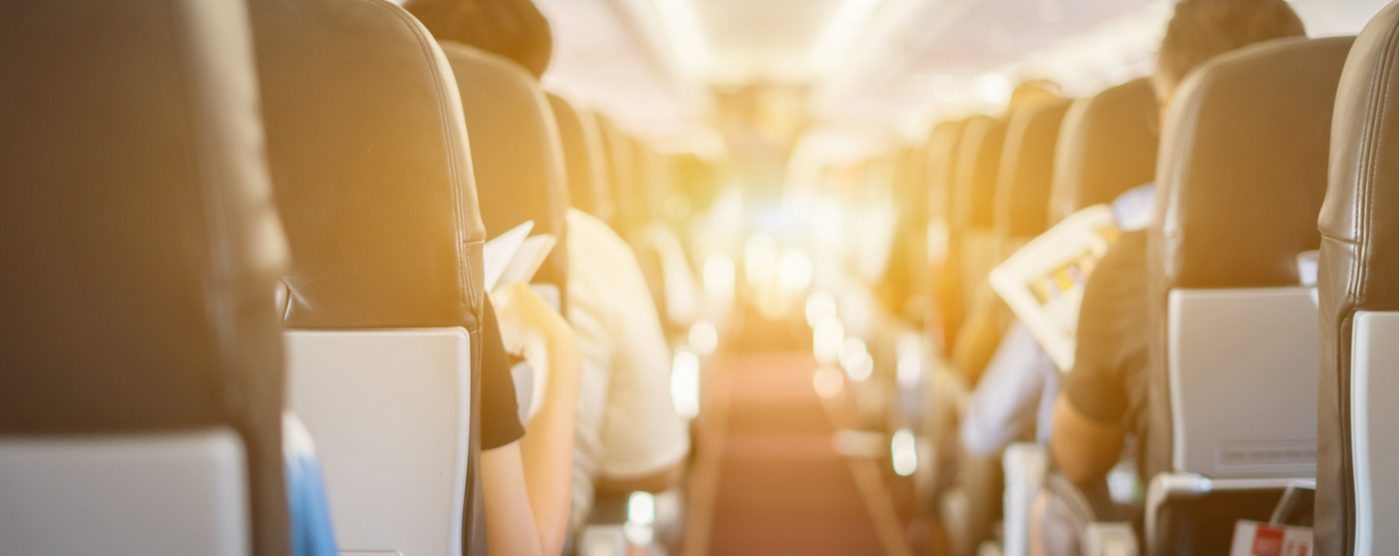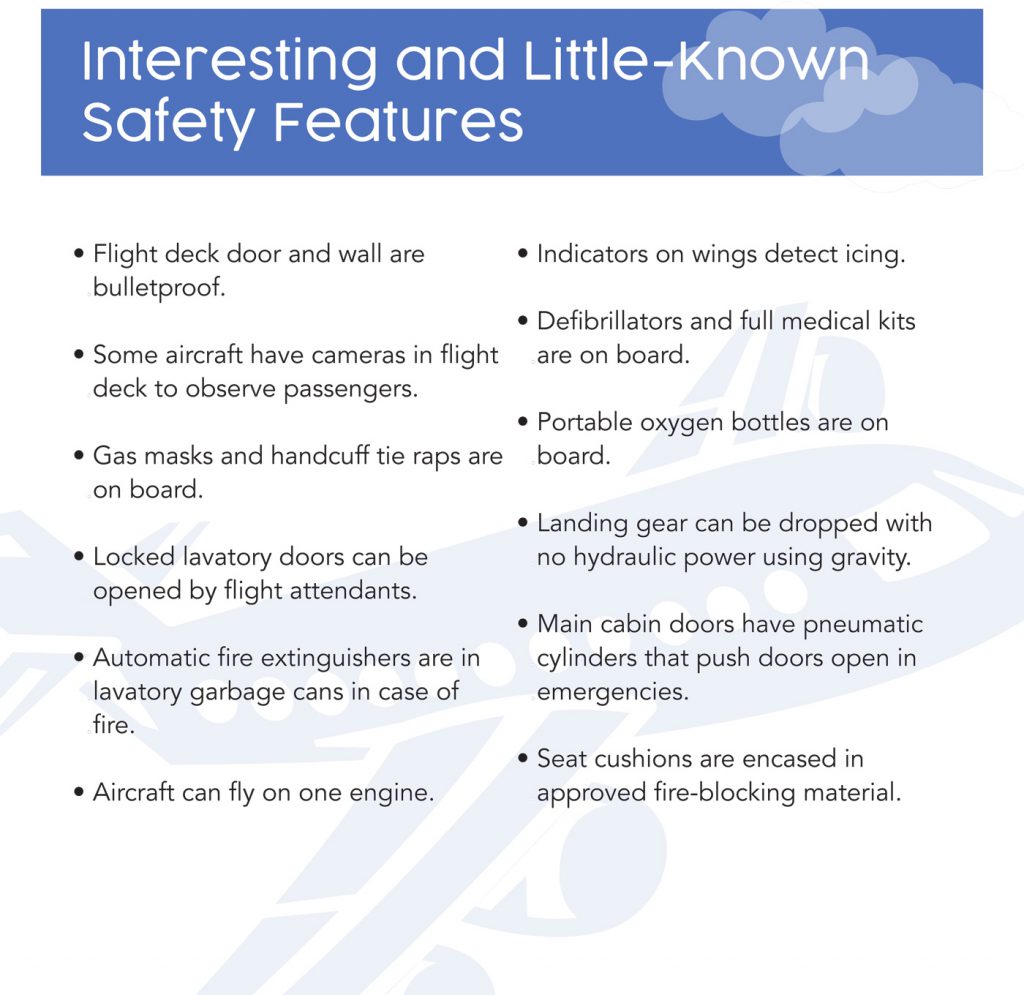Interesting and Little-Known Airplane Safety Features You May Not Know About

You may have heard that air travel is considered one of the safest forms of transportation—and for good reason. In addition to a checklist of precautionary measures taken to ensure passenger safety, air travel is also the most maintained public transportation system for mass travel. Airplane safety precautions go way beyond the fastening of seat belts and listening to the pre-flight safety drill. As important as these measures are, did you know of the interesting and little-known safety features on airplanes that even the most seasoned air traveler may not be aware of?
This month, we caught up with Fred Parham, associate director of the Aviation Technology Institute (ATI) at Vaughn College, for his take on the subject. So, sit back and relax as we reveal some cool and interesting airplane safety features that just might surprise you. (Oh, tray tables and seats in an upright position do not apply here.)

Emergency Backup Systems
We don’t want to think about this, but even the best systems need a backup system―or two. Today’s aircraft are equipped with backup systems in the event of a catastrophic failure.
- Ram Air Turbine (RAT)—Commonly known as RAT in the aviation industry, this small turbine is used as an alternate emergency hydraulic or electrical power source in the event of a catastrophic failure. A propeller-like turbine, which is stowed in a compartment in the fuselage or wing, drops down beneath the plane and generates power from the airstream while being connected to an electrical generator or hydraulic pump. The RAT provides power to vital systems that include flight controls and instrumentation, as well as navigation and communication equipment which aids the pilot to land the plane safely in an emergency.
- Auxiliary Power Unit (APU)—Did you ever wonder how the air conditioning and electricity operate on the airplane when the engines aren’t running? If so, you can be thankful for the APU should you ever find yourself sitting in an airplane while it’s being serviced or prepared for flight. This small turbine is in the rear of the aircraft and supplies electric power, compressed air and hydraulic pressure to the aircraft systems.
Interesting airplane safety features
Here are some other interesting airplane safety features passengers may be curious about:
- Floor Proximity Emergence Escape Path Marking System (FPEEPMS)—Do you recall the flight attendant explaining how arrows will illuminate the floor of the cabin in an emergency, serving as a guide to the exit doors? In case you missed it, this system is in place in the event of a fire in the cabin. Thick smoke can make it impossible to find the way to safety. Since smoke rises, passengers can crawl to avoid smoke as they follow the arrows to the exit doors.
- Traffic Collision Avoidance System (TCAS)—These life-saving systems within aircrafts detect, warn and issue instructions to pilots of two aircrafts in the event of an impending collision.
- Terminal Control Area (TCA) or Terminal Maneuvering Area (TMA)—In order to reduce the risk of midair collisions, there is a designated area of controlled airspace around major airports where there is a high volume of air traffic. These areas are called terminal control areas (TCA) or terminal maneuvering areas (TMA). Air traffic control ensures aircrafts flying within these areas are safe.
- Enhanced Ground Proximity Warning (EGPWS)—This electronic system alerts pilots if their aircraft is in immediate danger of flying into an obstacle, approaching terrain or the ground.
Air travel can be an exciting experience. Whether it’s flying off to unexplored destinations, visiting with friends and family or for business, the exhilaration of flying is truly a wonder. We hope these little-known airplane safety features make you feel even more comfortable whenever you fly the friendly skies.
Check out all that’s possible through Vaughn’s Aviation Training Institute and by earning aviation degrees and certificates.

